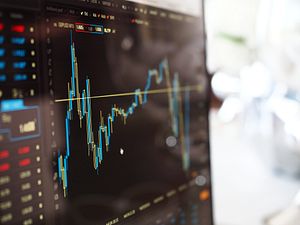On Monday, South Korea’s central bank released its foreign exchange intervention over the first half of 2019, just the second such report issued as part of recent efforts to increase transparency. The extent of the Bank of Korea’s (BOK) activity highlights the bumpy year the country has had so far, which stands to become more jarring on the road ahead.
Facing headwinds both at home and abroad, the BOK sold a net $3.8 billion through the end of June to support a volatile South Korean won – which was the worst performing Asian currency over the same time period. This is a steep increase from the $187 million the bank stated it sold in the second half of 2018, though the jump is not as drastic when looking at other sources. While the BOK has only made the amount of its interventions public for the last two six-month periods, the U.S. Treasury has been disclosing its own estimates as part of its efforts to track potential currency manipulation for a much longer period. The selloff of $3.8 billion was more than the net sales of $2.9 billion in 2018, but short of the $6.6 billion in 2016 (2017 saw net purchases of $9 billion.)
The aggregate numbers, however, cannot paint the whole picture. Currency interventions can swing widely month-to-month, depending on what is happening in financial markets. Much as it has been done before, the net selloffs in recent months to buttress the won could just as easily be reversed soon, at least to some degree, by purchases of foreign exchange to keep the won from appreciating too quickly. Yet, due to a number of growing challenges, it seems likely that the BOK will continue to need to support the won more than it will need to slow it down in the coming months.
The South Korean economy has struggled amid mounting uncertainty in global trade and limited domestic demand. Global rating agency Standard and Poor’s recently lowered South Korea’s projected GDP growth rate this year to 1.8 percent, down from its 2 percent July forecast and below the BOK’s 2.2 percent target. A mainstay of the South Korean economy, exports fell in September for the 10th straight month due mostly to lower semiconductor prices and the trade war between Beijing and Washington, according to South Korea’s Ministry of Trade, Industry and Energy. Domestic consumption and investment are also down. With an escalating U.S.-China trade dispute and limited results so far from South Korean President Moon Jae-in’s economic reform agenda, the second half of the year doesn’t seem likely to go all that much different from the first.
Despite the somewhat dour outlook, the BOK is well positioned to continue to soften the blows facing the South Korean economy. At over $400 billion, constituting around 25 percent of GDP, the BOK’s international reserves provides much space to back the won. Additionally, the central bank’s plan to expand the transparency of its foreign exchange intervention by releasing data on a quarterly basis later this year could help to further discourage speculation against the won through making support for the local currency clearer. The BOK is also widely expected to lower its key interest rate by the end of the year to help spur the economy.
Following renewed calls for more fiscal stimulus alongside monetary easing in Europe, the South Korean economy would, however, be best served by likewise increasing government spending to boost the economy. Moon has more actively pursued this route than his predecessors, but there is still plenty of room for further spending.
Kyle Ferrier is a Fellow and Director of Academic Affairs at the Korea Economic Institute of America (KEI) and a contributor to The Diplomat’s Koreas blog.

































